Croatia’s coastline is dotted with picturesque villages that offer a perfect blend of charm and natural beauty. From hidden coves to cobblestone streets, these coastal gems capture the essence of Mediterranean life. Whether you’re exploring historic harbors or relaxing on quiet beaches, each village has its own unique allure. Get ready to fall in love with the serene atmosphere and breathtaking views that these Croatian coastal villages offer.
Rovinj
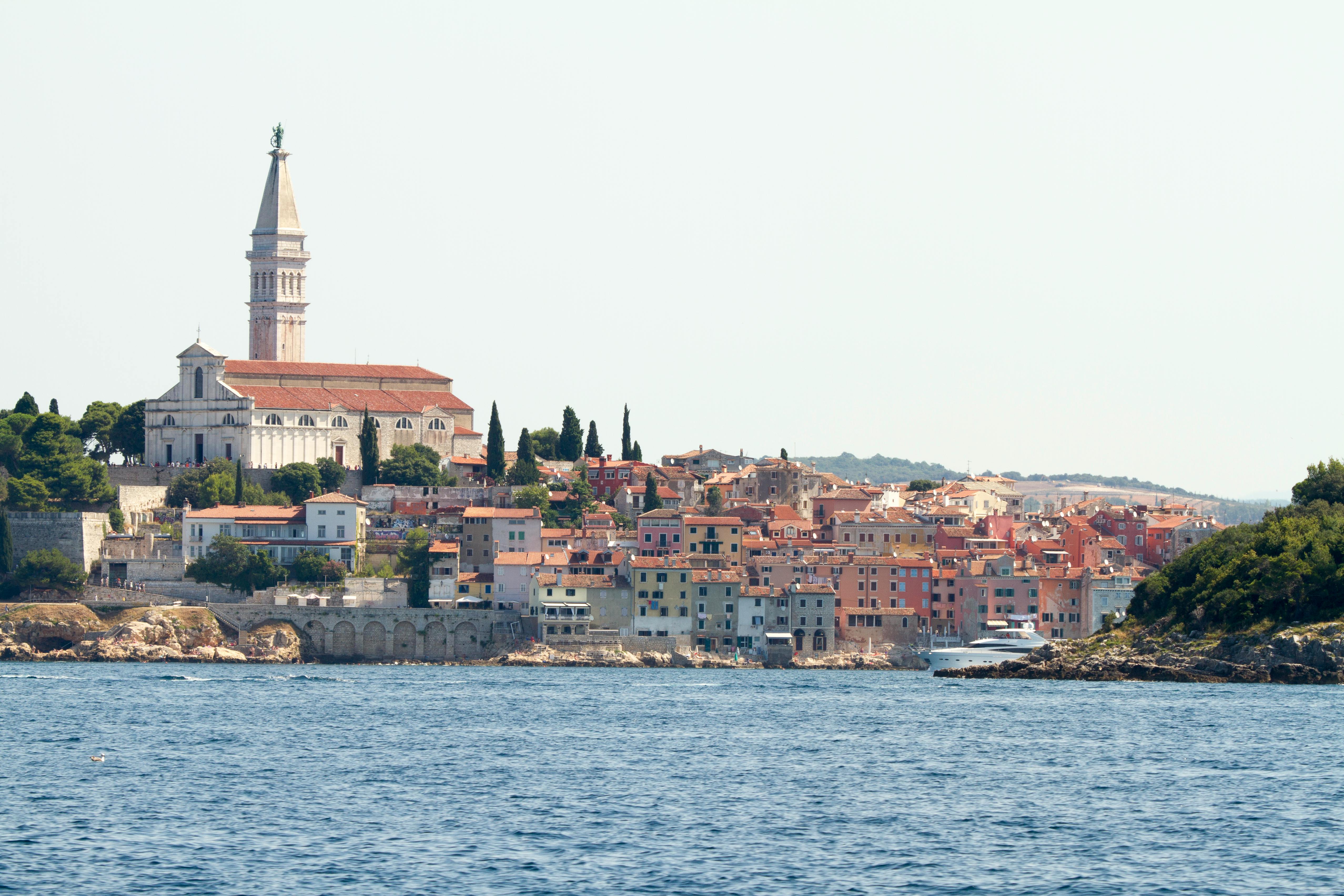
Rovinj is a bustling, vibrant village located on the Istrian peninsula, with a population of around 15,000 people. What sets Rovinj apart is its maze of narrow cobblestone streets that wind through old Venetian-style buildings, offering glimpses of the sparkling Adriatic Sea. The village’s charming harbor, filled with colorful fishing boats, adds to its authentic coastal atmosphere. Rovinj is known for St. Euphemia’s Church, whose bell tower dominates the skyline, providing panoramic views of the surrounding islands. Whether you’re exploring its art galleries or dining at seaside restaurants, Rovinj’s blend of culture and nature makes it truly special.
Korčula Town
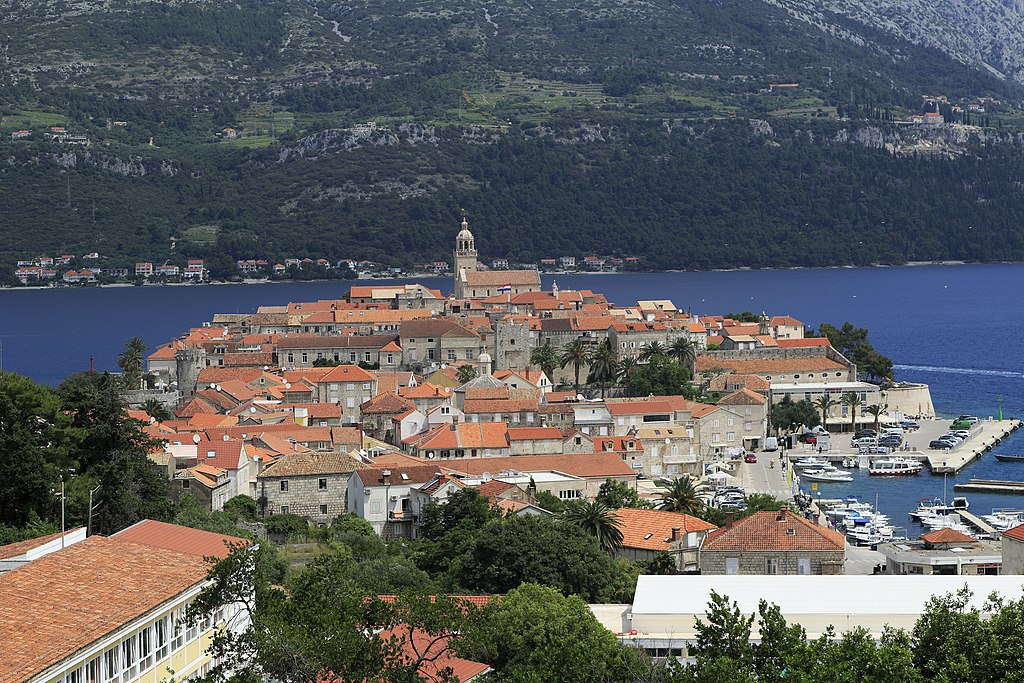
Located on the island of Korčula, this medieval village is home to just over 3,000 residents, giving it a cozy, intimate feel. Often called a “mini-Dubrovnik,” Korčula Town boasts fortified walls, narrow streets, and a rich history tied to the famed explorer Marco Polo. Its unique location, surrounded by crystal-clear waters, makes it perfect for beach lovers and history buffs alike. The town’s traditional sword dance, Moreska, sets it apart from other Croatian villages, offering a cultural experience you won’t find anywhere else. Korčula Town’s mix of medieval charm and serene beaches ensures it leaves a lasting impression.
Cavtat
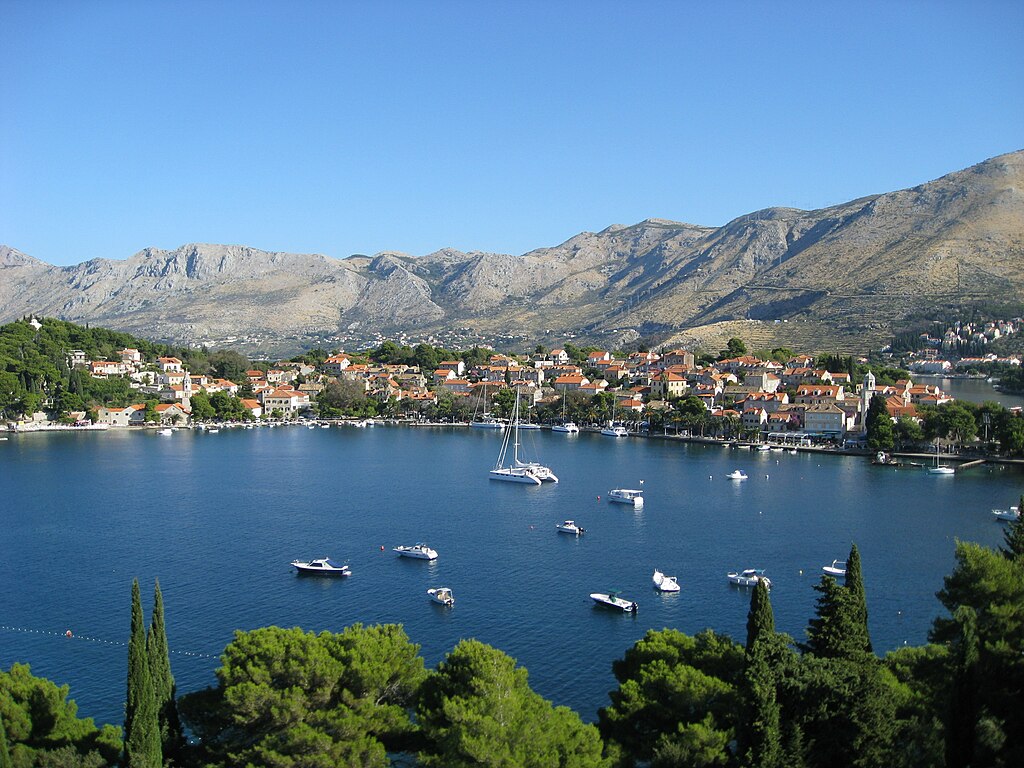
Cavtat, located just south of Dubrovnik, is a quieter alternative to its bustling neighbor, with a population of roughly 2,000 people. What makes Cavtat stand out is its stunning waterfront promenade lined with palm trees, where you can enjoy peaceful walks along the crystal-clear bay. The village is known for its cultural heritage, including the Racic Mausoleum and the House of Vlaho Bukovac, a renowned Croatian painter. Cavtat’s relaxed pace, combined with its proximity to Dubrovnik, offers visitors a perfect blend of tranquility and accessibility. It’s a haven for those seeking a laid-back coastal escape with a touch of history.
Primošten
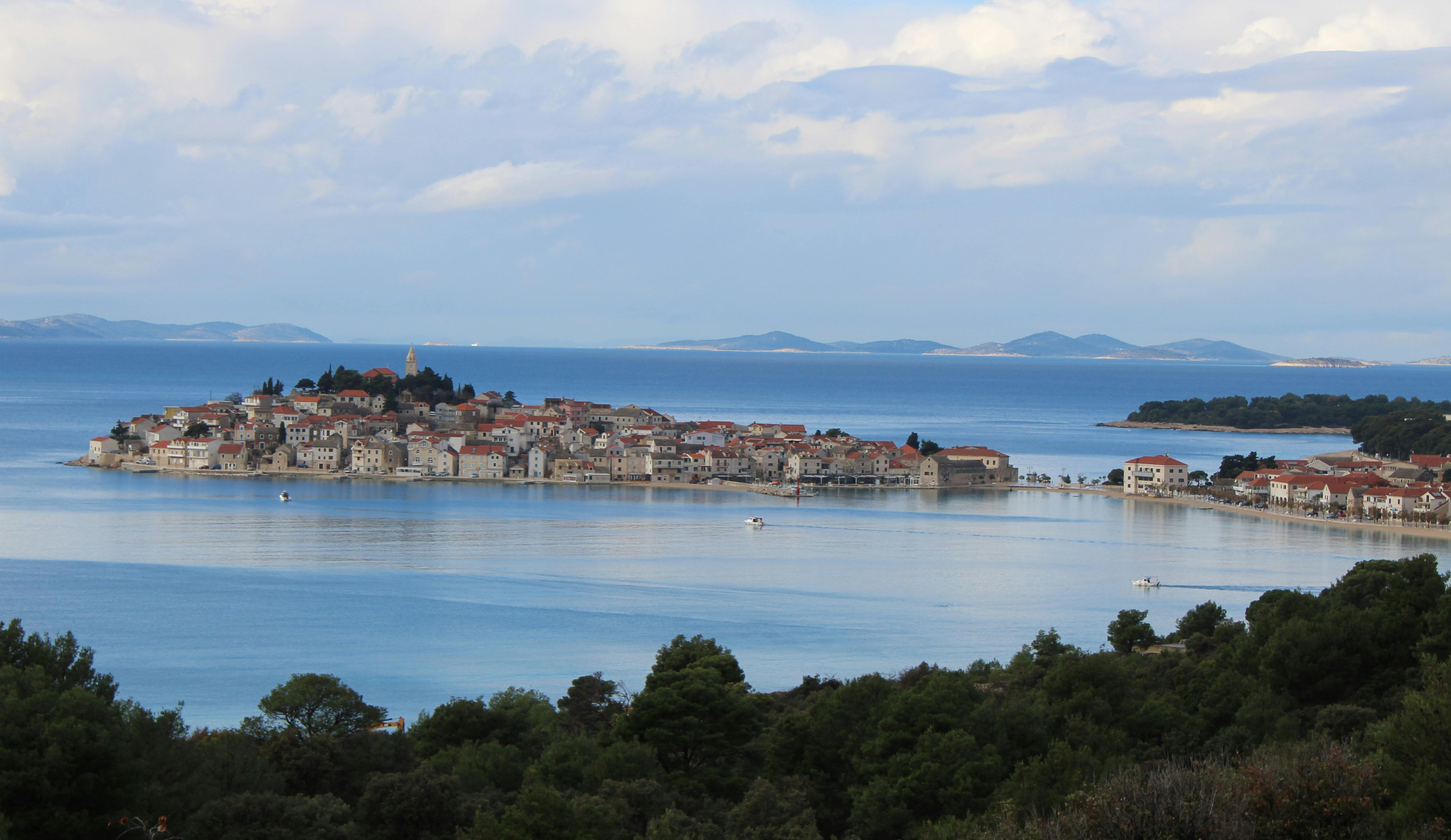
This small village, home to about 2,800 people, is known for its picturesque location on a small peninsula, surrounded by the Adriatic on all sides. Primošten is famous for its sprawling vineyards and stunning pebble beaches, where the deep blue waters create a perfect backdrop for sunbathing or swimming. The village also boasts a charming old town with narrow streets, stone houses, and the Church of St. George perched on a hilltop, offering breathtaking views of the sea. Primošten’s unique combination of beach and wine culture makes it an irresistible stop along Croatia’s coast. It’s the kind of place that feels both timeless and welcoming.
Vrboska
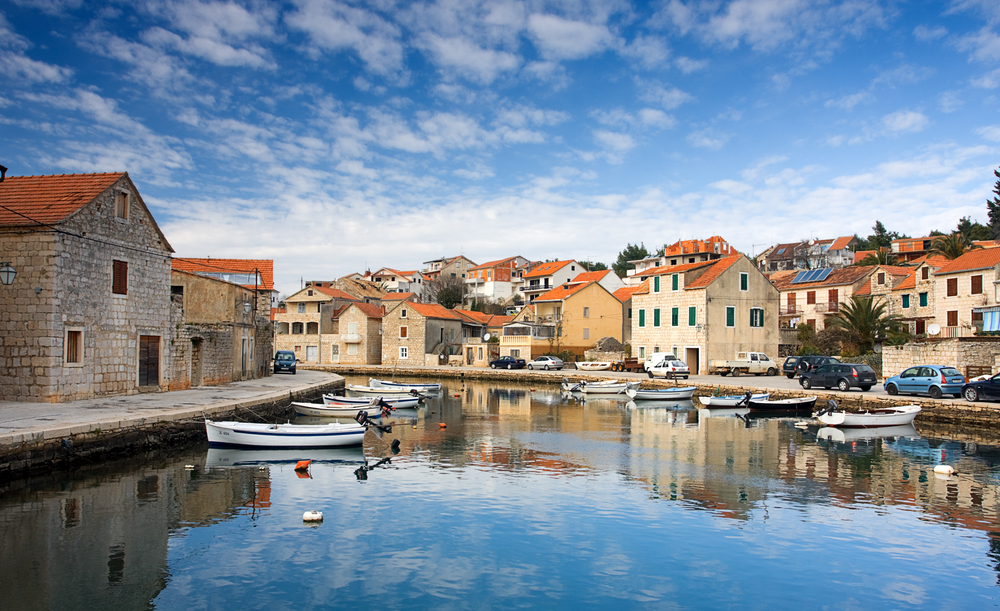
Nestled on the island of Hvar, Vrboska is a hidden gem with a population of just 500 people, making it one of the quieter coastal villages. Often referred to as “Little Venice” due to its network of charming stone bridges, Vrboska has a unique mix of Renaissance and Baroque architecture. The village’s highlights include its picturesque marina, a fortified church that offers stunning views, and a laid-back atmosphere perfect for those wanting to escape the crowds. Vrboska is also known for its rich fishing tradition, and you can sample some of the freshest seafood in its local taverns. Its serene, unspoiled beauty makes it stand out from the more tourist-heavy destinations in Croatia.
Ston
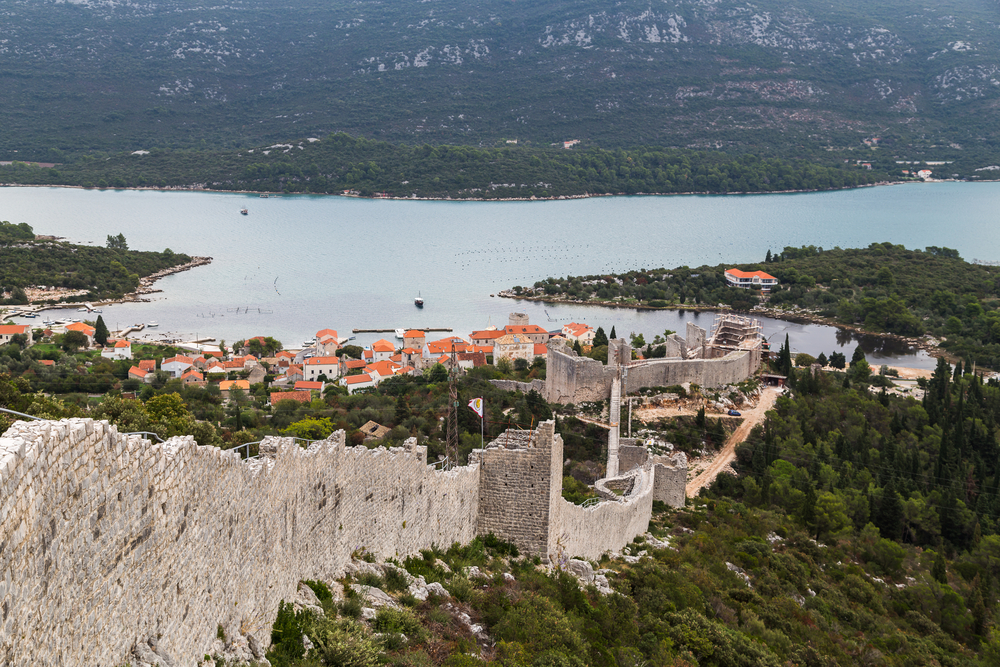
Ston is a small, historical village on the Pelješac Peninsula with a population of about 2,400. It’s best known for its impressive medieval walls, often compared to the Great Wall of China, stretching over 5 kilometers and offering breathtaking views of the surrounding landscape. Ston’s claim to fame, however, is its salt production, making it one of the oldest saltworks in the world. The village is also renowned for its oysters, and visitors can enjoy fresh seafood at its many local restaurants. Ston’s combination of history, culture, and culinary delights gives it a unique flavor compared to other coastal villages.
Trogir
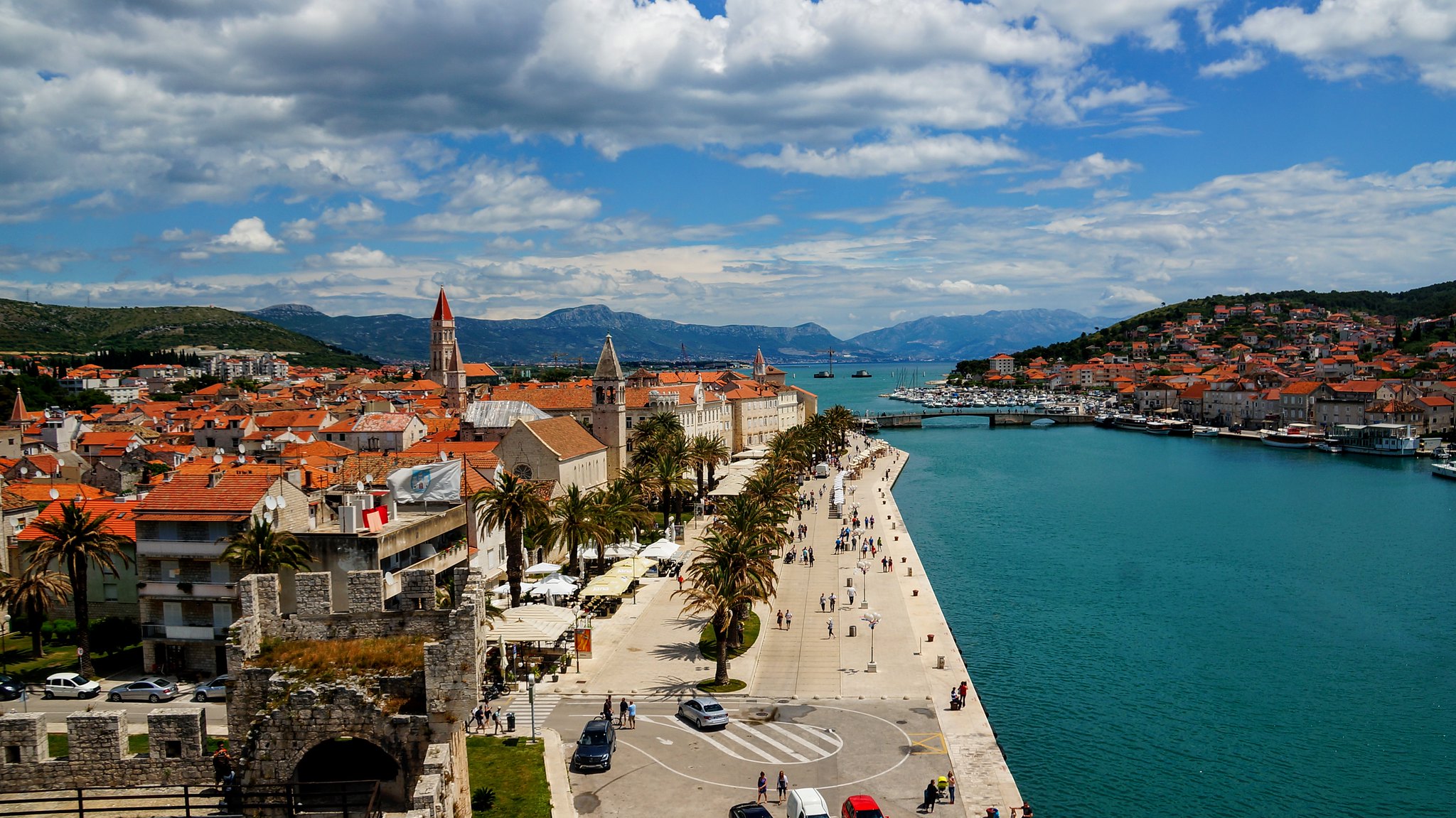
Trogir is a UNESCO World Heritage site with a population of around 13,000, known for its well-preserved medieval architecture. Situated on a small island between the mainland and the larger island of Čiovo, Trogir is surrounded by water, adding to its coastal charm. What makes Trogir unique is its blend of Gothic, Romanesque, and Renaissance architecture, with the Cathedral of St. Lawrence as its crown jewel. The narrow, winding streets of the old town are perfect for exploring, with hidden courtyards and lively squares at every turn. Trogir’s rich history and stunning coastal views make it a must-visit on any Croatian itinerary.
Pucisca
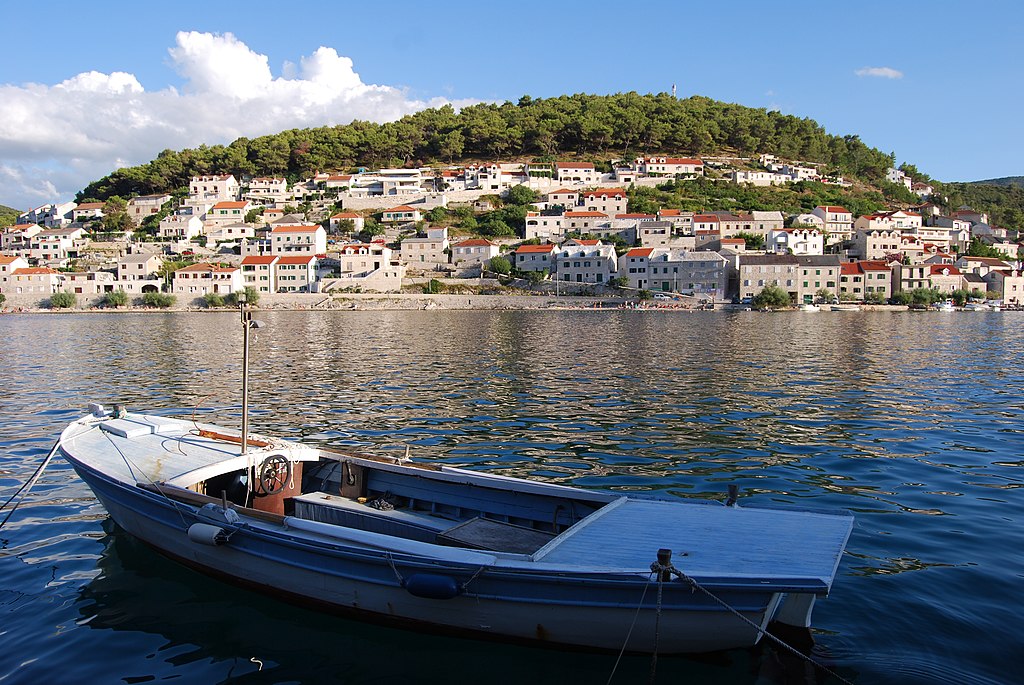
Located on the island of Brač, Pucisca is a small village of about 1,500 people, famous for its stone masonry tradition. The white limestone from Brač has been used in famous buildings worldwide, including the White House in Washington, D.C. The village’s architecture reflects this legacy, with many buildings constructed from this local stone, creating a unique, polished aesthetic. Pucisca’s tranquil bay, surrounded by hills and olive groves, offers a peaceful escape from the busier tourist destinations. Its combination of natural beauty and craftsmanship makes it a truly special place on the Croatian coast.
Milna
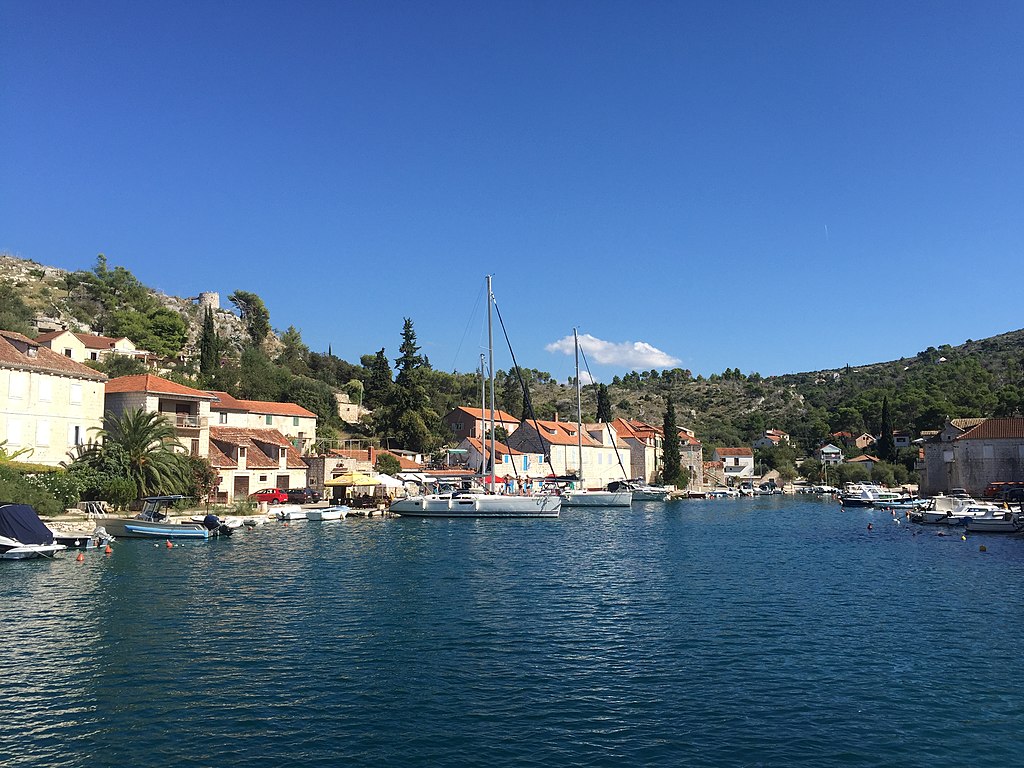
Also located on the island of Brač, Milna is a picturesque village with a population of about 1,000 people. It’s known for its deep bay, which has provided shelter for sailors for centuries, earning it the nickname “the bay of a thousand ships.” The village has a laid-back, nautical vibe, with its marina filled with boats and its waterfront lined with charming cafes. Milna’s peaceful beaches and crystal-clear waters make it a perfect destination for those looking to relax by the sea. Its maritime heritage and quiet charm set it apart from other coastal villages.
Sukošan
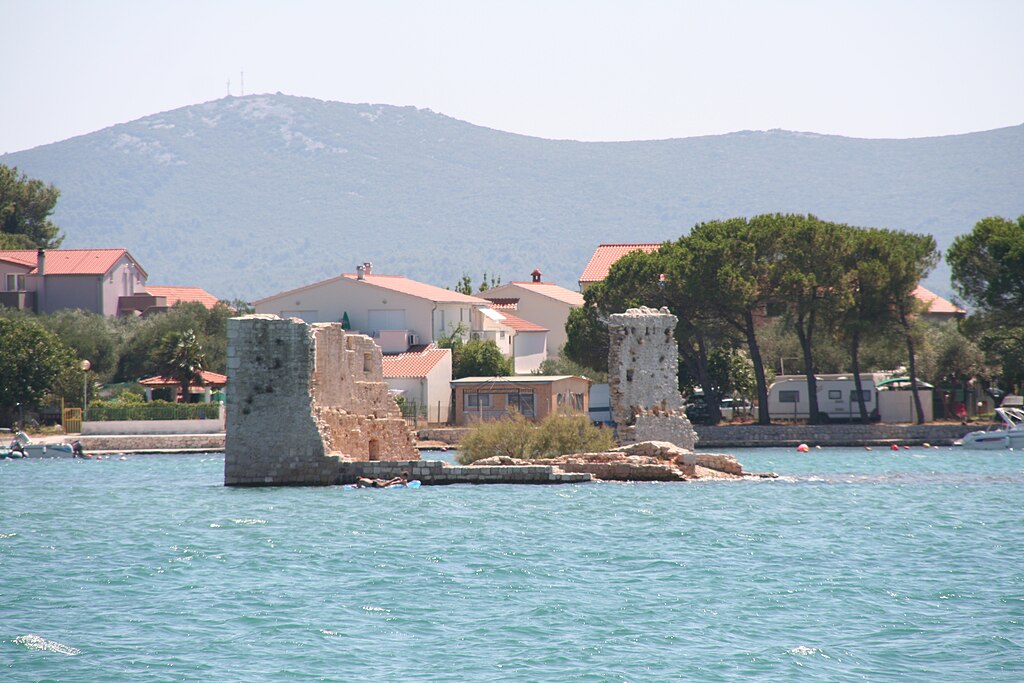
Sukošan is a charming village just south of Zadar, with a population of around 4,500. Its large marina, one of the biggest on the Adriatic, makes it a popular spot for sailors and yachting enthusiasts. Sukošan is known for its relaxed atmosphere, beautiful beaches, and vineyards, offering visitors a taste of authentic Dalmatian life. The village’s highlight is the Palac, a historic summer residence built on an islet just offshore. With its blend of nautical charm, history, and peaceful beaches, Sukošan is a perfect escape from the more crowded coastal cities.
Opatija
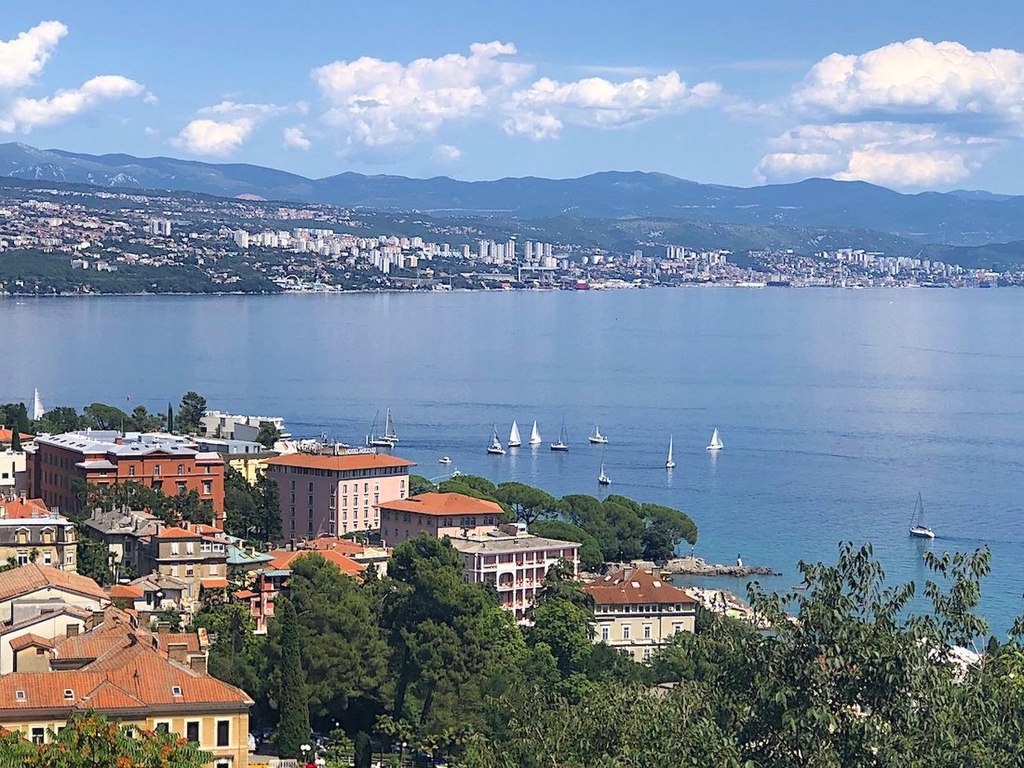
Opatija, often referred to as the “Pearl of the Adriatic,” is a larger coastal town with around 11,000 residents. Known for its elegance, Opatija has long been a favorite retreat for European aristocracy, with grand villas and hotels lining its scenic promenade. The town’s mild climate and lush parks set it apart from other villages, offering a perfect blend of nature and sophistication. Opatija’s stunning views of the Kvarner Gulf, combined with its rich history, make it a must-visit for those seeking a more refined coastal experience. Its unique mix of opulence and natural beauty creates an unforgettable atmosphere.
Mošćenice
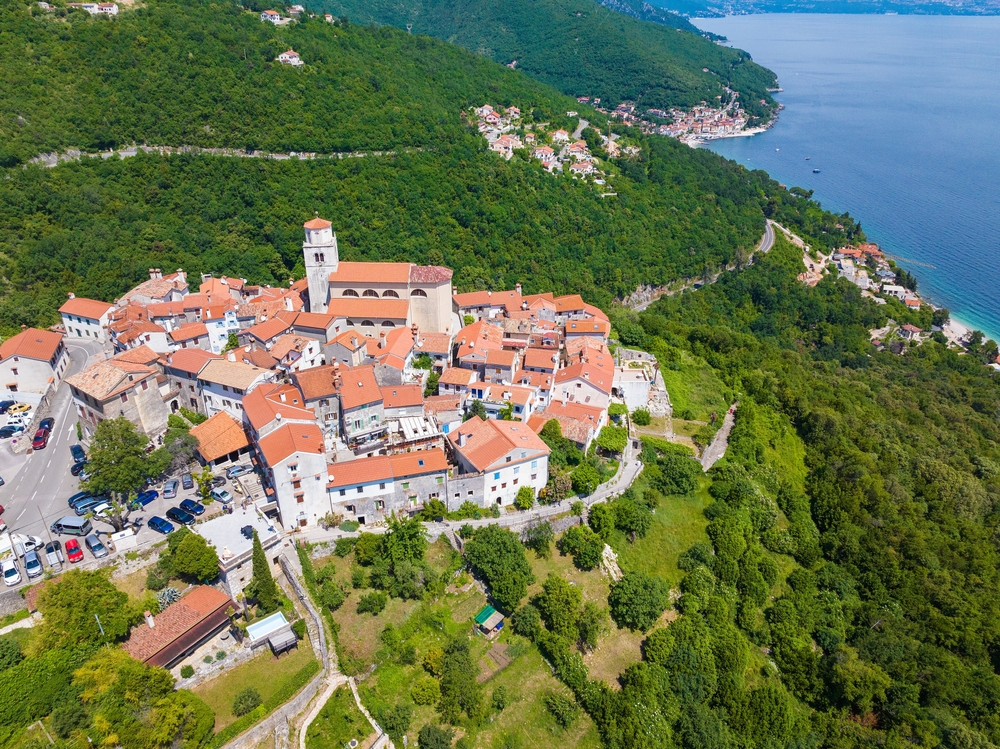
Perched on a hilltop above the Adriatic, Mošćenice is a tiny village with a population of around 300 people. This historic settlement is known for its breathtaking views of the Kvarner Bay and the islands in the distance. The village’s narrow, winding streets and stone houses give it a timeless charm that feels untouched by modern life. What makes Mošćenice unique is its preserved medieval architecture and proximity to the beach, combining culture and relaxation in one stop. The nearby Mošćenička Draga beach, just a short walk away, offers crystal-clear waters for swimming and sunbathing, making this village a hidden coastal gem.
Vis Town
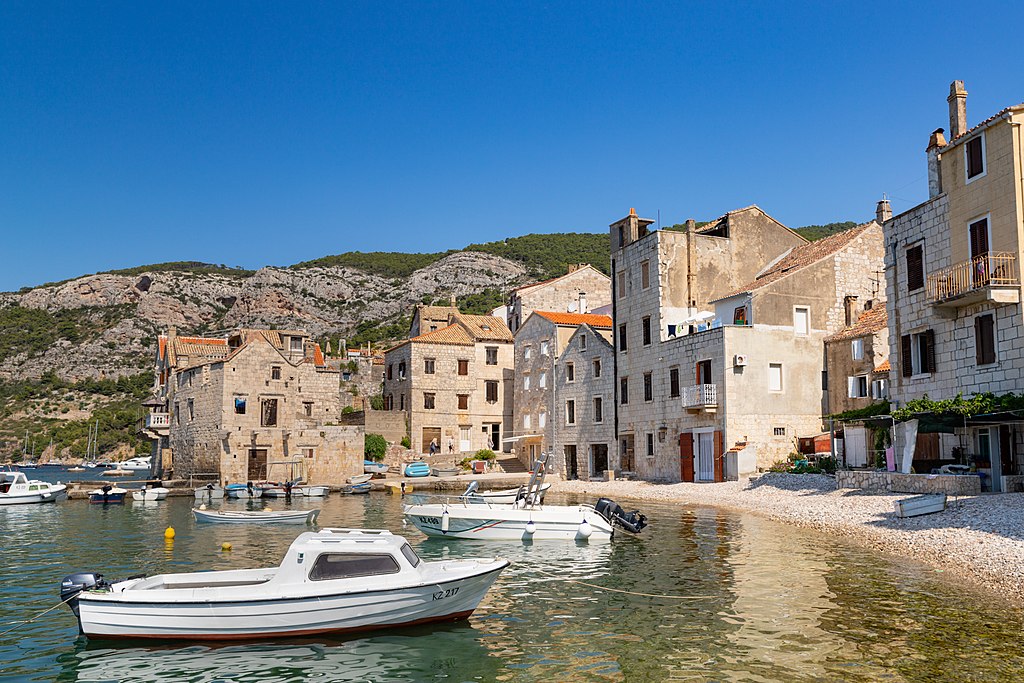
Located on the island of Vis, this quiet village is home to about 1,900 residents and offers a relaxed atmosphere far from the bustling tourist hubs. Vis Town is known for its authentic Mediterranean charm, with narrow streets, Venetian-style houses, and a rich maritime history. It’s also famous for its proximity to the Blue Cave, a natural wonder that draws visitors for its stunning azure waters. What makes Vis stand out is its unspoiled nature and laid-back vibe, offering visitors a glimpse of Croatia as it once was. With its clear waters, hidden coves, and peaceful surroundings, Vis Town is perfect for those seeking tranquility.
Novigrad
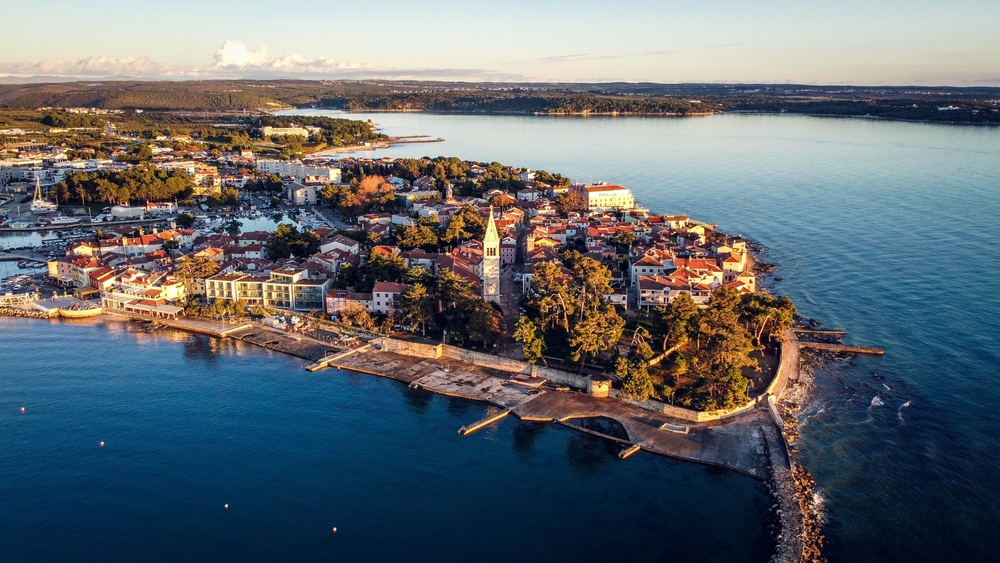
Novigrad is a small fishing village with about 4,000 people, located along the Istrian coast. Unlike many other Croatian coastal destinations, Novigrad has retained its authentic, uncommercialized feel, with traditional stone houses, a working harbor, and quaint streets. The village is known for its fresh seafood, with local restaurants serving up some of the best in the region. Novigrad’s quiet beaches and calm atmosphere make it an ideal spot for families and those looking for a peaceful retreat. The village’s charming waterfront and unspoiled character give it a warm, welcoming feel that is distinctly different from larger tourist hubs.
Baška
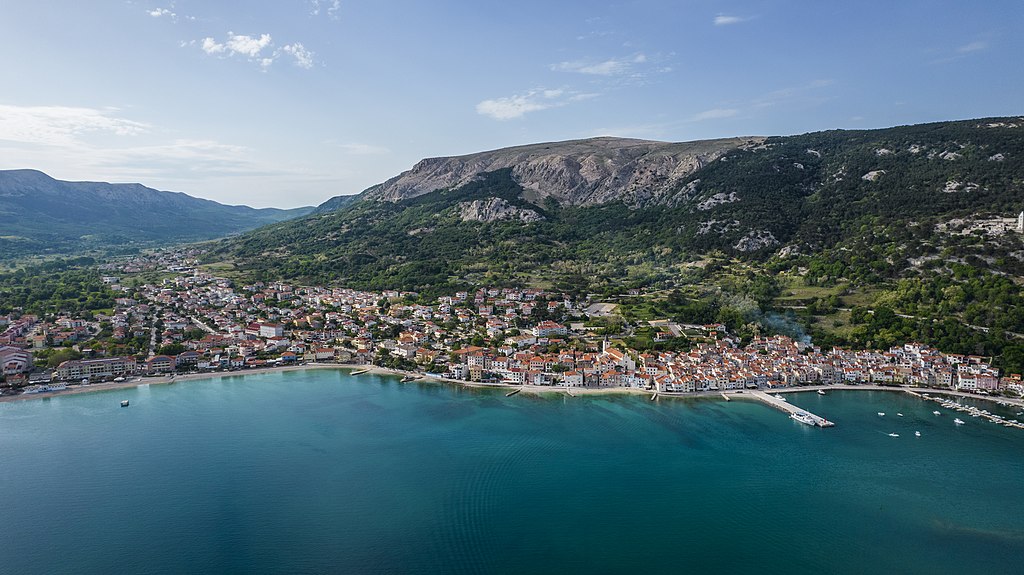
Baška, located on the island of Krk, is known for its stunning beaches and crystal-clear waters, attracting visitors to its shores year after year. With a population of about 1,700, Baška combines a lively atmosphere with the charm of a small village. Its most famous feature is Vela Plaža, a 1.8-kilometer-long pebble beach that stretches along the Adriatic. In addition to its beachside appeal, Baška is known for its historical significance, as it is home to the Baška Tablet, a medieval stone inscription that is one of the earliest examples of the Croatian Glagolitic script. This combination of natural beauty and rich history makes Baška stand out among Croatia’s coastal villages.
Brela
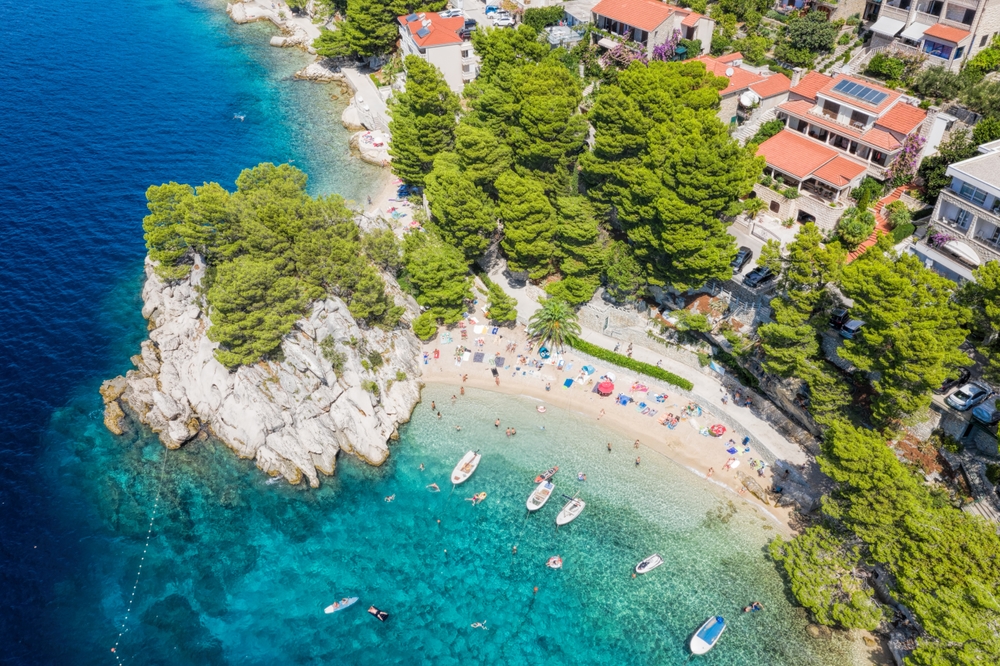
Brela is a small village along the Makarska Riviera, with a population of around 1,500. It’s known for its stunning beaches, particularly Punta Rata, which is often listed among the most beautiful beaches in Europe. The village is also famous for Brela Rock, a natural landmark that has become a symbol of the Adriatic coast. What makes Brela unique is its blend of untouched nature, with pine trees that stretch down to the sea, and modern amenities for visitors. The combination of its serene, natural beauty and excellent beach facilities make Brela a perfect destination for relaxation and exploration.
Zlarin
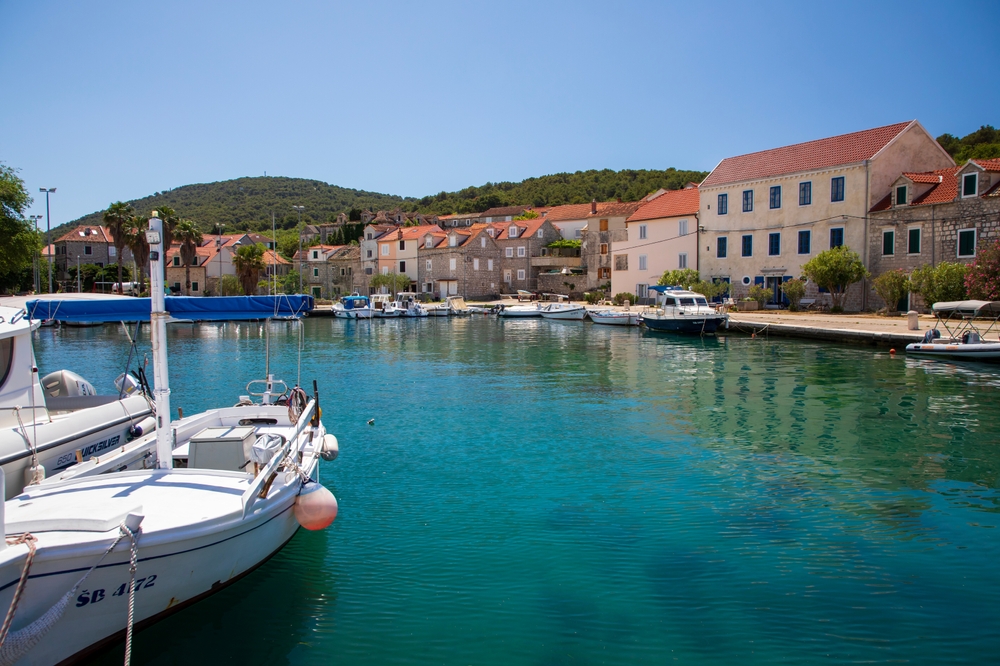
Zlarin is a small, car-free island village located just off the coast of Šibenik, with a population of about 300. The village is known for its tradition of coral diving and jewelry making, with local artisans crafting beautiful pieces from the red coral found in the surrounding waters. Zlarin’s quiet, unspoiled atmosphere makes it a perfect escape for those looking to disconnect from the hustle and bustle of modern life. The village is surrounded by lush forests and clear waters, offering plenty of opportunities for hiking, swimming, and snorkeling. Its commitment to preserving its natural and cultural heritage gives Zlarin a timeless charm that is hard to find elsewhere.
Trpanj
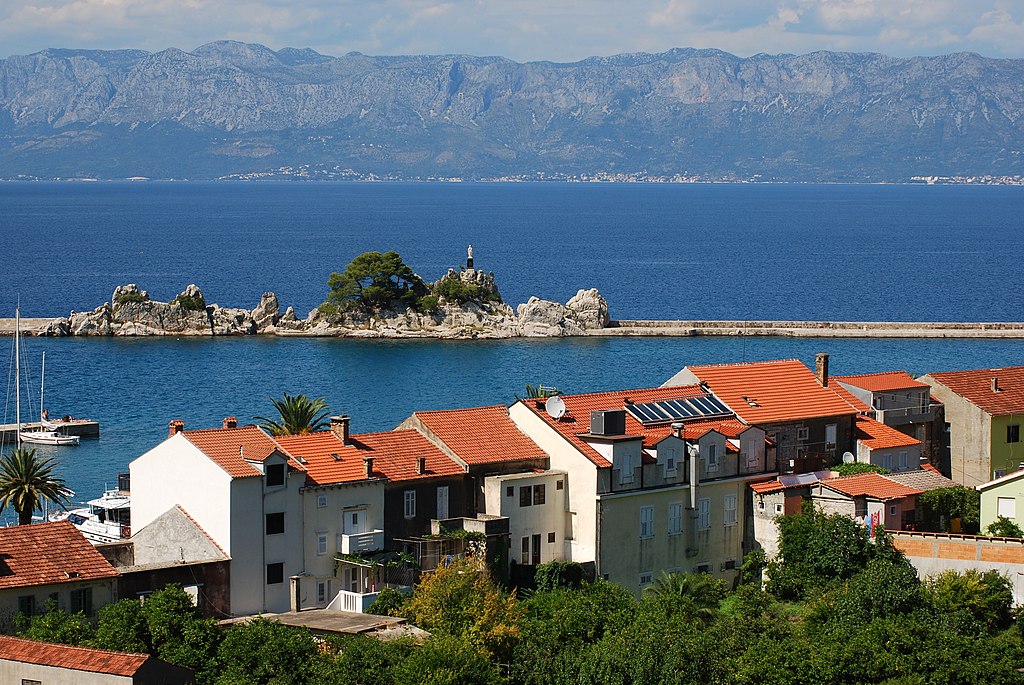
Located on the Pelješac Peninsula, Trpanj is a quiet fishing village with around 700 inhabitants. The village is known for its picturesque harbor, lined with colorful boats and traditional stone houses that create a postcard-worthy scene. Trpanj’s beaches, with their crystal-clear waters and pebbly shores, are perfect for swimming and sunbathing. What sets Trpanj apart is its relaxing atmosphere and the nearby healing mud baths, which are said to have therapeutic properties. Trpanj’s blend of natural beauty, healing waters, and small-town charm makes it a peaceful retreat on Croatia’s coast.
Lovran
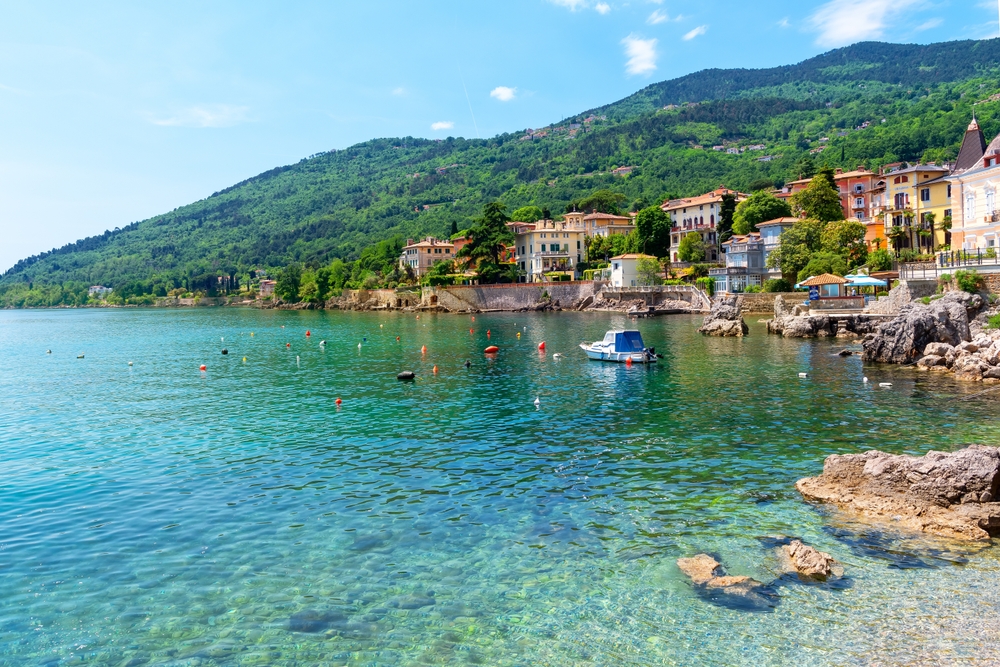
Lovran is a historic coastal village located near Opatija, with a population of about 4,000. Known for its mild climate and lush Mediterranean vegetation, Lovran has been a popular destination for centuries, attracting visitors with its beautiful villas and seaside promenade. The village’s name comes from the laurel trees that grow abundantly in the area, giving it a unique, green landscape compared to other coastal towns. Lovran’s old town is well-preserved, with medieval buildings and narrow streets that invite exploration. Its combination of history, nature, and elegant charm makes Lovran a standout destination on the Croatian coast.
Bol
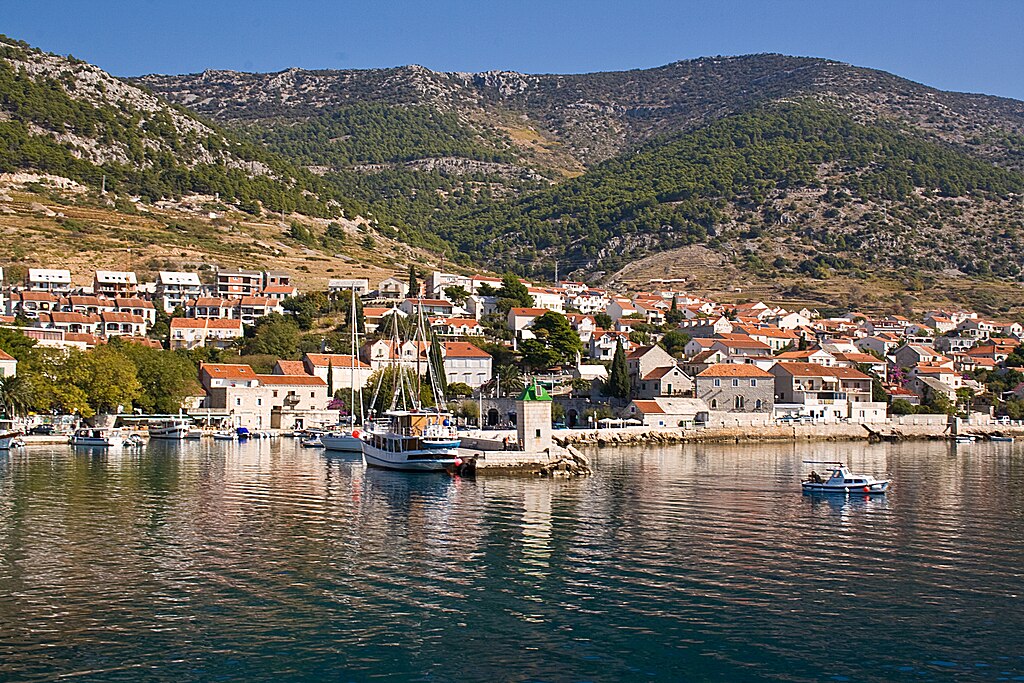
Bol is a small town on the southern coast of the island of Brač, with a population of around 1,600. It’s best known for Zlatni Rat, one of the most iconic beaches in Croatia, which stretches out into the Adriatic and changes shape with the tides and winds. Bol’s picturesque harbor, lined with fishing boats and palm trees, creates a laid-back, Mediterranean vibe. In addition to its natural beauty, Bol is a hub for windsurfing and other water sports, making it a favorite among active travelers. The village’s combination of stunning beaches, outdoor activities, and relaxed atmosphere make it a must-visit.
Fažana
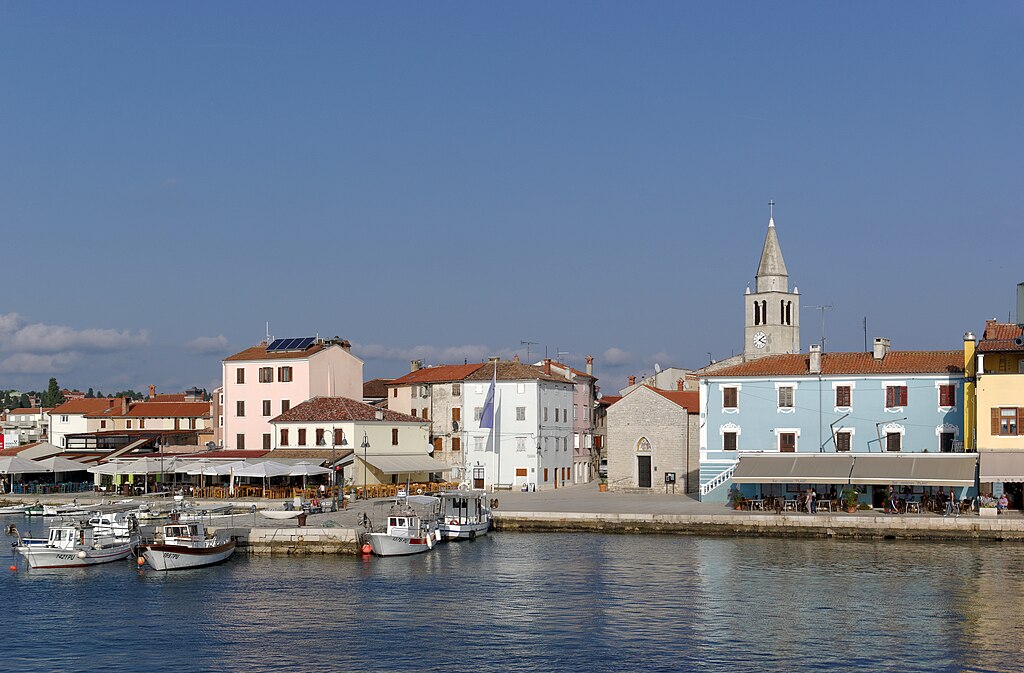
Fažana is a small fishing village on the Istrian coast, with a population of around 3,600. The village is the gateway to the Brijuni Islands National Park, a group of 14 islands known for their stunning natural beauty and historical significance. Fažana’s charming waterfront, with its colorful houses and small boats bobbing in the harbor, gives it a welcoming, laid-back feel. The village is also famous for its sardines, and visitors can enjoy fresh seafood in the many local restaurants. Fažana’s proximity to both the sea and the Brijuni Islands makes it a perfect base for exploring Croatia’s natural wonders.
Jelsa
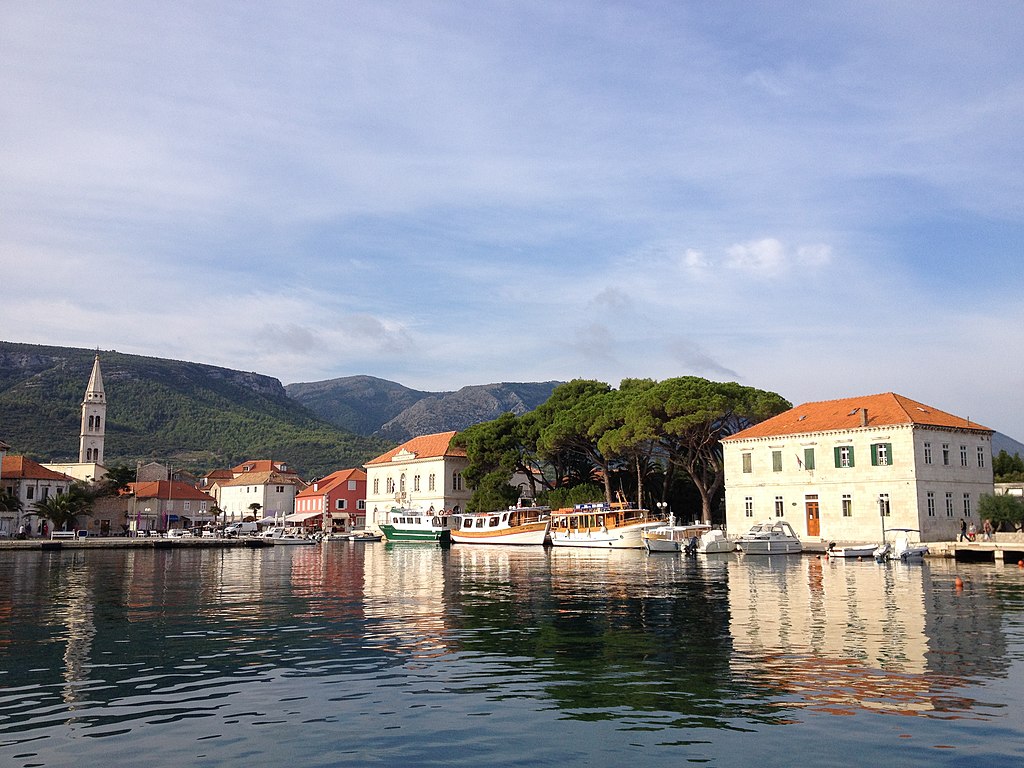
Jelsa, located on the island of Hvar, is a small village with a population of around 3,600 people. Known for its vibrant harbor, Jelsa offers a lively yet relaxed atmosphere, with plenty of cafes, restaurants, and shops lining its streets. What sets Jelsa apart from other villages on Hvar is its combination of stunning natural surroundings, including pine forests and vineyards, with a rich cultural heritage. The village is also a hub for local festivals, giving visitors a chance to experience authentic Croatian traditions. Its blend of history, nature, and lively atmosphere makes Jelsa a standout destination on Hvar.
Sutivan
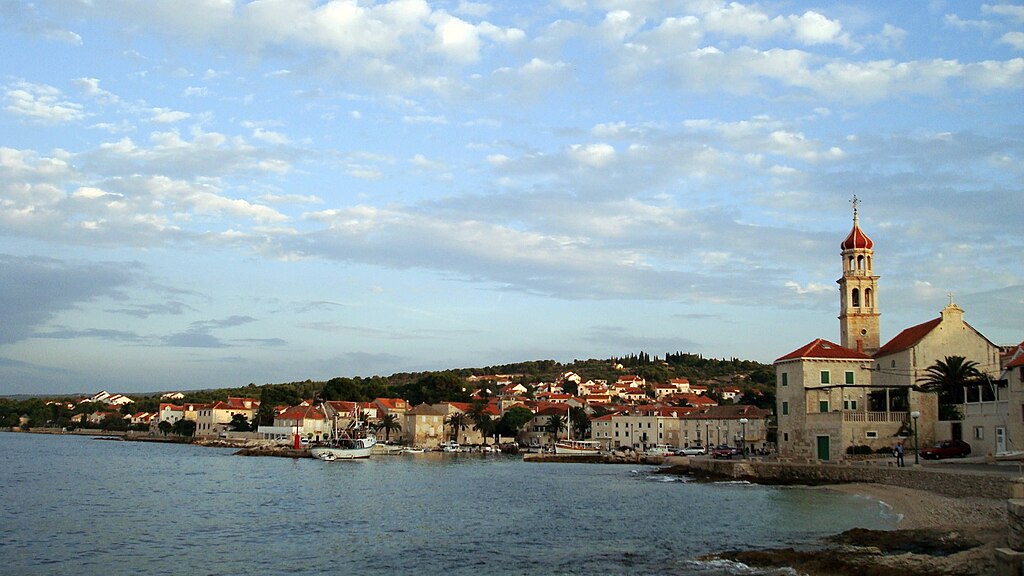
Sutivan is a small village on the island of Brač, with a population of around 800. Known for its quiet, laid-back atmosphere, Sutivan is the perfect place to unwind and enjoy the natural beauty of the Adriatic coast. The village is famous for its clear waters and peaceful pebble beaches, as well as its well-preserved stone houses and winding streets. Sutivan’s proximity to the Vidova Gora mountain, the highest peak on the Adriatic islands, makes it a great base for hiking and outdoor adventures. Its combination of tranquility, natural beauty, and adventure opportunities makes Sutivan a unique spot on Brač.
Mali Lošinj
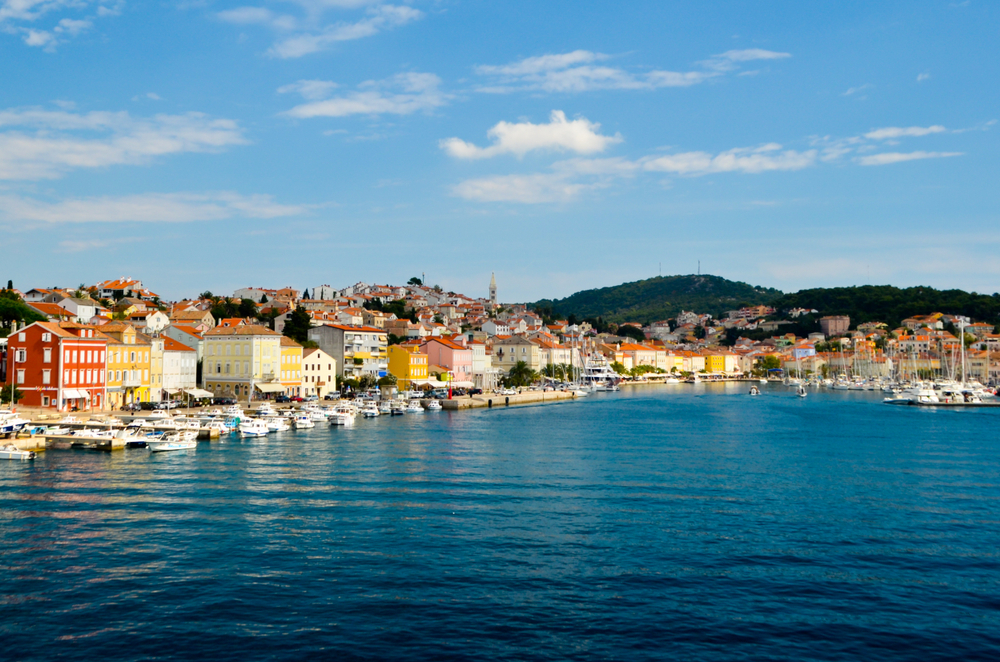
Mali Lošinj, located on the island of Lošinj, is the largest village on this list, with a population of around 6,000. Known for its mild climate and lush vegetation, Mali Lošinj has long been a popular health resort, attracting visitors with its clean air and beautiful landscapes. The village’s crescent-shaped harbor is lined with pastel-colored houses and bustling cafes, creating a lively, welcoming atmosphere. Mali Lošinj is also famous for its dolphin population, and boat tours offer visitors the chance to see these friendly creatures up close. Its combination of natural beauty, wellness tourism, and marine life makes Mali Lošinj a standout destination on Croatia’s coast.
This article originally appeared on UnifyCosmos.
More from UnifyCosmos
10 Affordable Wines That Taste Surprisingly Luxurious

You don’t have to break the bank to enjoy a good bottle of wine. Affordable options can taste just as good as their pricey counterparts. Read More
15 Expert Tips for Lip Color That Lasts All Day

Keeping your lip color vibrant all day can be tricky. But with a few simple tricks, you can enjoy your favorite shade without constant touch-ups. Read More
18 Ways to Keep the Romance Alive Between Dates

Keeping the romance alive between dates can be challenging, especially in today’s fast-paced world. However, with a little creativity and effort, you can maintain that spark and deepen your connection. Read More
Leave a Reply